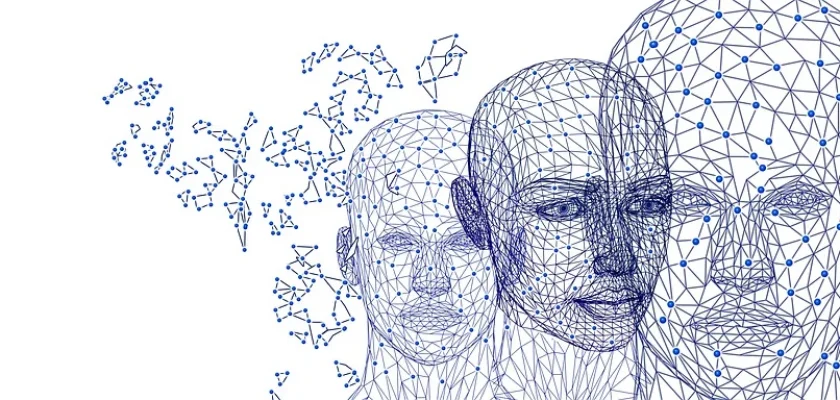Extended Reality in Healthcare Settings
- Updated on: May 7, 2025
- Published on Aug 31, 2022

Extended reality, or XR, is an umbrella term for technologies that combine the real and virtual worlds. Augmented reality (AR), virtual reality (VR), and mixed reality are examples of technology (MR). The Extended Reality market, which was worth around $30 billion in 2020, is on track to reach $125 billion by 2026. Indeed, the different ways in which XR has been deployed in the education, training, healthcare, and gaming sectors have contributed to the growth of its market share.
XR was once thought to be a technology that could help the entertainment industry. It was thought that an immersive experience would improve how a gamer or moviegoer perceived a game or watched a movie. However, the application of XR has expanded far beyond this. It is now used in a variety of fields, including healthcare and industrial equipment manufacturing, to simulate real-world environments for training purposes. Furthermore, the pandemic has accelerated the world’s perception of extended reality. The increased popularity of XR devices has been attributed to the need for virtual conferences and training sessions. Furthermore, the decreasing cost of hardware components such as cameras, sensors, and display systems has resulted in lower manufacturing costs. These have also aided in improving the quality of the devices being developed as well as the sophistication with which these devices operate.
How Can Extended Reality Be Used in Healthcare?
In the healthcare industry, extended reality XR has enormous potential. To better understand XR’s extended reality, you must first understand its three major aspects, which are:
Virtual Reality (VR)
Virtual reality is a concept that began in 1990 and involved people entering a virtual world. It has numerous applications in healthcare, including training residents to perform surgeries. This helps patients endure their pain and deal with their fear before surgery.
Reality Augmented
It is a computer device that transmits virtual data to the real world. Google Glass is an excellent example of this. The game Pokémon is another great example of augmented reality, or AR. It is used in healthcare to assist surgeons in gathering additional information on the operating table and to keep nurses’ hands free while caring for another patient.
Reality Blended
Some argue that it is similar to augmented reality, but the main difference is that MR inserts digital objects into the real world as if they were real. It is used to help patients recover after a serious injury or illness.
How is Extended Reality Changing Healthcare?
As we all know, XR technologies have a variety of applications in healthcare. In 2017, it assisted in joining the hearts of conjoined twins by providing a full-size 3D VR model of people. Another significant application of this technology is the Holographic Navigation Platform, which allows surgeons to track surgical markings and screws in patients. Other significant advantages of XR technology include:
- It allows surgeons to see the complexities and issues of the human body and detect every part of the human body.
- It is also used to train other medical students and to properly memorize information.
- Extended reality has aided in the study of the brain through 3D modes. Using this technology, we can see the front and back of both parts of the brain.
A Few Healthcare-Related Use Cases:
1. Assist in better understanding the patient’s condition and relieving their pain
Immersion in experience during treatment can help relieve a patient’s pain by distracting them from what’s going on. For example, at a Canadian university, students created a VR-based game to keep cancer patients occupied during chemotherapy and thus distract them from their pain.
This would enable doctors and healthcare providers to better understand their patients by immersing them in experiences that allow caregivers to put themselves in their patients’ shoes and experience what they do. This has the potential to significantly increase interpersonal trust in the doctor-patient treatment relationship.
2. Prepare surgeons before performing actual surgeries
The possibilities for using XR in healthcare are limitless. Here are a few applications geared toward surgical planning and training:
- Based on patient scans, 3D replicas can be created, allowing surgeons to study and collaborate with their team on surgical tactics. Furthermore, an XR immersive headset can be used as a device to demonstrate the cut, draw, and measure tools and to develop a real-world operation procedure.
- Additionally, for healthcare providers, an XR-based immersive interactive platform where multiple surgeons can collaborate for training lessons, discussions, and more can be created.
- Surgeons can also use simulation-based applications to practice and improve their skills.
An XR application can include realistic vibration patterns, giving the surgeon the sensation of holding real tools. When combined with the power of VR, such an immersive application can provide a lifelike platform for studying surgeries.
3. Patients’ health conditions must be diagnosed
What if doctors could scan a patient’s body and immediately identify any health issues? It’s now possible with an XR application, as intriguing as it sounds. To detect patients’ illnesses, a set of immersive technologies can be combined with 3D models. Certain health issues, such as tumors or broken bones, can also be detected using such applications. Furthermore, images from the application can be used to walk patients through the steps of their potential surgery.
4. Provide educational training to medical students
In medical education, extended reality is essential for training and teaching. XR-based apps can be developed for educational purposes for doctors and medical students, allowing them to see intricate details in anatomically accurate models of the human body. This allows them to learn about different systems and put their surgical skills to the test.
5. Allows the creation of a surgery simulator for the training of medical practitioners
Immersive technologies have the potential to allow doctors to simulate surgery. With the help of extended reality, a surgery simulator for training medical practitioners can be created. The use of a surgery simulator eliminates the need for a patient, cadaver, or animal.


